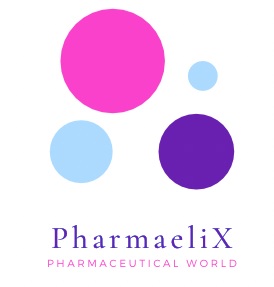Ion Chromatography (IC) is also calling as Ion Exchange Chromatography. IC is one of the key separation techniques in the Chromatography World. Hence, a suitable Method of Development is essential to ensure the best separation of Analytes.
Ion Chromatography Method development requirements

- Literature
- Number of components (ions) present in the drug
- Chemical structure
- The molecular weight of compounds
- Sample solubility
- Other additional information (i.e. ion present as the salt of the drug or as a part of drug substance etc.,)
Read never before pharma articles at Pharmaelix – Water Content in Pharma Industry 2023, Loss on Drying Test Guidance 2023
Literature for Ion Exchange Chromatography
Search for IC literature, and check the analytical conditions and method requirements. Adopt the suitable method and proceed as such in case of satisfactory results or modify the to get a good resolution.
IC Method Development – Number of components (ions)
The number of “ions” present in the drug information shall be taken from the Research and Development (R&D). It is basic information that will help in the selection of the Chromatography column, suppressor, and mobile phase.
IC Method Development – Chemical structure
It is helpful to see if any cleavage is possible in different media like alkali and acidic.
Molecular weight
This is helpful to calculate the ions present in the salt form of drugs.
Ion Chromatography Method Development – Sample Solubility
Sample Solubility is one of the key aspects of Ion Chromatography Method Development (IC Method development).
Select the sample solubility, mobile phase is the best choice. If the sample is insoluble in the mobile phase, first check the solubility in IC-grade water and then go for IC-recommended solvents like MeOH, ACN, THF, etc. in small quantities, and the remaining shall be water or mobile phase.
Alkali like NaOH can use for the anions and acids can use for the cations.
First, observe the Drug structure and which ions are present in the drug as per the process.
Identify the nature of the ion such as “Salt form or free ionic impurities”.
Some drugs are prepared in salt form, in those drugs calculate the theoretical value of ions in percentage %.
Ionic impurities may come from the various R&D processes and along with the raw materials, these kinds of ions we can calculate directly.
Selection of mobile phase
Based on ions (anion and cation) select the mobile phase, for anion’s general mobile phases like NaOH and sodium tetraborate, etc.
For cations general mobile phases like methane sulfonic acid, sulfuric acid, etc…
Selection of Chromatography columns
Based on ions (anion and cation) and for different applications, select the columns for Ion Chromatography method development (IC Method)
Some general anion columns ION PAC AS12A, ION PAC AS-7, ION PAC AS-10, ION PAC AS-11, ION PAC AS-11HC, ION PAC AS-17, and ION PAC NS1, etc.
Some of the general cation columns are ION PAC CS-12A, ION PAC CS5, ION PAC CS17, etc.
Based on the literature, check the analytical conditions. Select a suitable analytical column and the type of suppressor requires for anions or cations. Use 4mm suppressor for anion analysis ASRS-Ultra and use 4mm suppressor for cation analysis CSRS-Ultras.
Before analyzing, the soluble sample shall filter through a 0.45µm Nylon membrane filter and Solid-phase Extraction (SPE) C18 cartridge based on the recovery, if recovery is failing proceed with a 0.45µm Nylon membrane filter only.
The resolution between the ions shall be 1.5 for the sample mixture.
The peak shall be narrow and gaussian shaped.
The cost of analysis shall consider with respect to column and solvent choice.
Ion Exchange Chromatography Method Development (IC Method) Conclusion
The below parameters need to be ensured to finalize the Ion Exchange Chromatography method (IC Method). The standard area shall be reproducible in day-to-day analysis.
The developed method must meet the ruggedness in routine operation and be usable by all the laboratories for which it is intended and also with all types of system suitability tests.
Method development report shall be in available format. It shall be traceable for future reference for further modification. Because, whenever the synthetic process changes, modified to be optimized as per the process or for the compatibility of the existing method, not at the cost of System suitability criteria.
Finalize the method, based on the outcome of the results and justification.

Trackbacks/Pingbacks